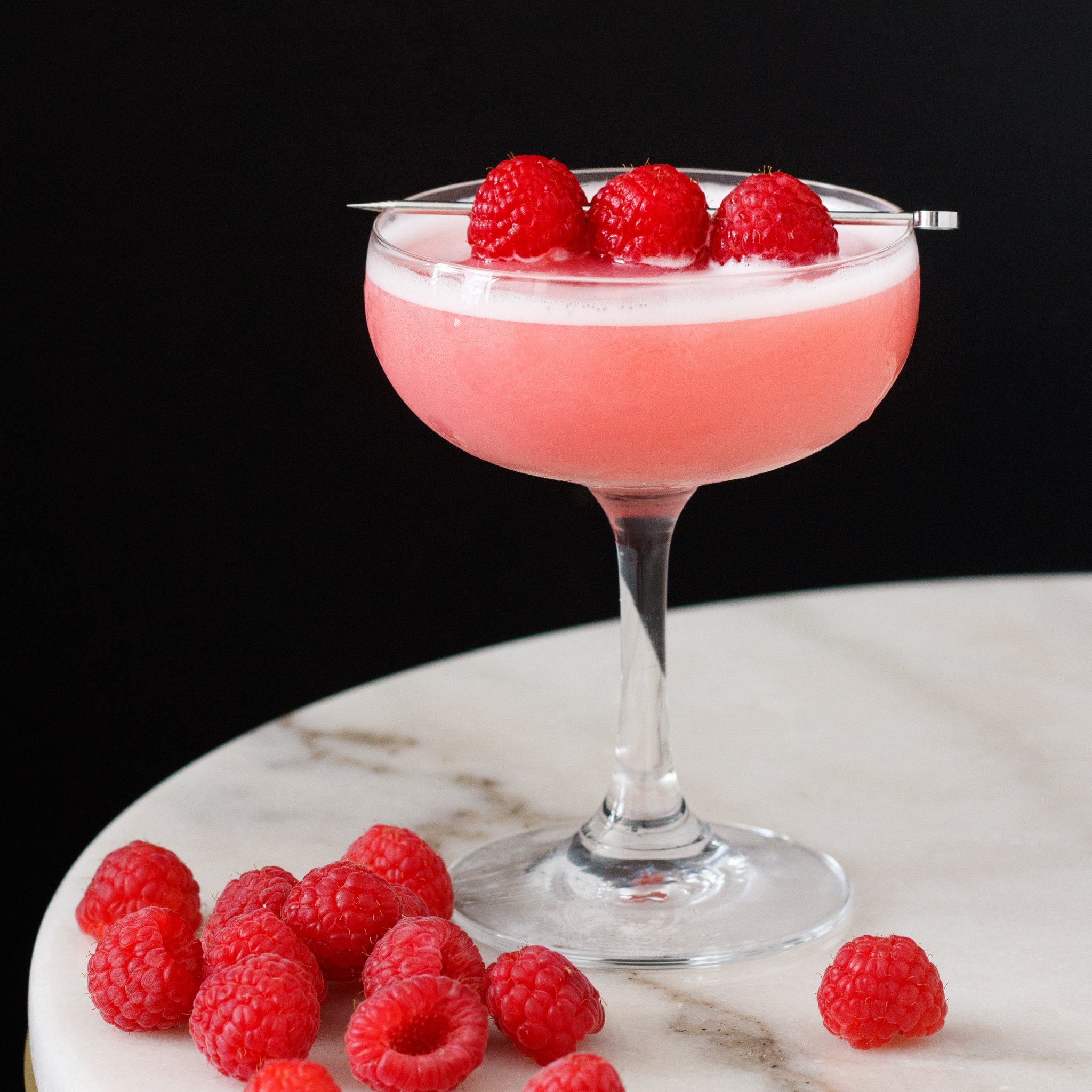2 ounces gin
1/2 ounce lemon juice
1/2 ounce raspberry syrup * see note
1 large egg white
Fresh raspberries, for garnish
In a cocktail shaker combine the gin, lemon juice, raspberry syrup, & egg white. Shake vigorously (without ice) for 10 seconds. Add ice and shake until frosty cold. Strain into a chilled cocktail glass. Garnish with a skewer of 3 fresh raspberries. Serve and enjoy.
*Note: To make raspberry syrup combine 3/4 cup of water and 1 cup of sugar, 1 cup of raspberries (fresh or frozen) and mash the raspberries up into a pulp. Strain out the seeds before using.
According to "The Old Waldorf-Astoria Bar Book," the Clover Club was first created in the late 1800s at the bar of the Bellevue-Stratford Hotel in Philadelphia. This popular hangout drew crowds of writers, lawyers, and titans of industry, who would meet and talk over cocktails, and the elegant Clover Club made with gin, lemon juice, raspberry syrup and egg white was a favorite among them.
The cocktail slowly grew in popularity, eventually becoming a nationwide sensation by the late 1910s and early 1920s. After prohibition though, it basically faded into obscurity, and by the 50s was largely forgotten. This is probably because A) nobody used raspberry syrup anymore and wanted to use grenadine instead, and B) there was another cocktail, the pink lady, that was taking the clover club’s place. A pink lady is essentially a clover club made with a mix of grenadine and applejack instead of the raspberry syrup. It sounds like the applejack adds something interesting to the drink that you would lose if you just used grenadine. According to "Gaz" Regan in "The Joy of Mixology," you have to use real raspberry syrup to make a Clover Club, because "without it, this drink isn't much to talk about."
Thankfully this delicious cocktail is popular again today, thanks largely to its inclusion in Gaz Regan’s 2003 book, “Joy of Mixology,” and the 2008 opening of a now-famous cocktail bar in Brooklyn named after the drink.


